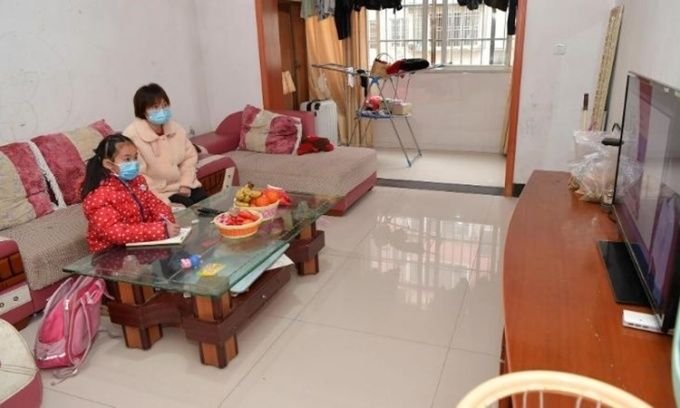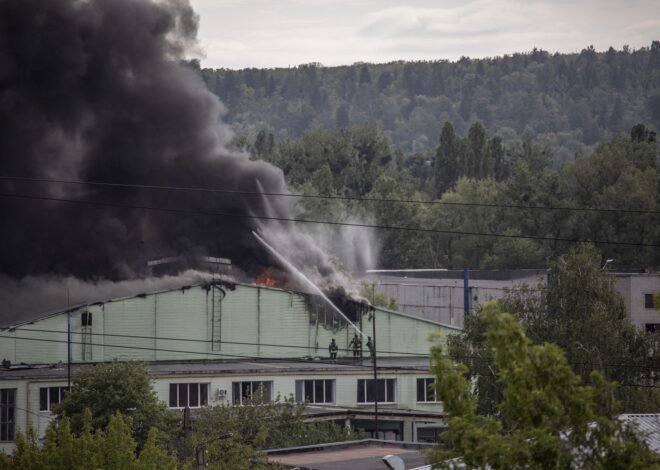
Distance learning during nCoV
For the past two weeks, Huang’s `school` has had no bell signaling the end of class, crowded hallways, noisy canteens or uniforms.
With physical education class, the teacher will practice the movements through the camera and the students will follow.
A student studies online at home in Nanchang city, Jiangxi province, China, February 10.
Huang puts stickers or napkins on her webcam so her classmates can’t see her if the teacher calls on Huang to answer a question.
Huang rarely leaves her house and she hasn’t seen her friends in a month because China is fighting the Covid-19 epidemic and to prevent nCoV from spreading, the government ordered the closure of schools across the country, causing 180 deaths.
Not only in China, students in Vietnam, Mongolia, Japan, Iran, Pakistan, Iraq and Italy also fall into the same situation.
To participate in remote classes, the equipment is mostly the same, including only a computer with an Internet connection, headphones and microphone.
For Huang, studying at home means spending hours in front of the computer and having very little social interaction.
`We couldn’t give feedback to the teacher even though we wanted to. So the teacher felt bad and we also felt awkward,` she shared.
Through distance classes, even though she did not meet her friends face to face, Huang said that in fact, she felt closer to her friends because everyone talked more, it seemed like everyone was longing to talk.
According to Xinhua news agency, Chinese primary and secondary school students are required to attend online classes.
In Hong Kong, where schools have been closed for a month, teachers have a different approach.
Schools initially just posted videos of lectures and activities for students on the website, but later they realized that helping students interact with each other and talk to teachers was more important.
`The children all feel uncomfortable because they are locked in the apartments,` Montessori International School principal Adam Broomfield said.
According to him, changing the way of learning really brings breakthroughs.
While students in mainland China and Hong Kong are used to online learning, in Italy, where 888 cases of nCoV infection have been recorded, students have just started learning remotely.
Schools in the Lombardy and Veneto regions in northern Italy were closed last week because of the epidemic.
In Milan, Gini Dupasquier’s two daughters learn through live PowerPoint presentations, group work with other students using Google Hangout and video chat with teachers.
`They are happy with this new way of learning. So far, I haven’t seen any problems,` she said.
A bigger problem for Dupasquier and many other parents is how to balance time at home and at work.
In Casalpusterlengo, a northern Italian town located in the `red zone` where thousands of people have been isolated from the outside world, Monica Moretti’s 15-year-old daughter has no access to livestreaming platforms.
Students at higher levels are likely to face more serious problems than program delays.
Jonathan Ye, 18 years old, a senior at Shanghai Binh Hoa International School, wants to study at university in the UK.
`If you don’t get good results at the exam, everything will go down the drain,` Ye said.

A teacher gives a lesson via mobile phone in Donghai city, Jiangsu province, China, February 17.
But Ye’s situation is still better than many other students in China.
Although schools in Hong Kong will be closed until April 20, the special zone government will still hold university exams on March 27 as planned.
In addition, there are also concerns that studying at home will affect students’ psychology.
Hong Kong-based mental health expert Odile Thiang said the loss of routine and social activities can have a big impact on children, especially during stressful times like today.
According to Chris Dede, a professor at Harvard University’s School of Education, there are many studies showing the negative psychological effects a student suffers after being isolated from friends because of a serious illness.
This is not the first time schools around the world have had to close or apply distance learning methods.
Distance learning has long been a topic of interest to educational experts.
According to Dede, combining classroom learning and online learning will bring better results than just applying one method alone.
`The worst thing for children is being quarantined at home without emotional support from friends, without an experienced educator to help them learn,` he said.
However, Dede believes that today’s students are still much luckier than students in the past.


